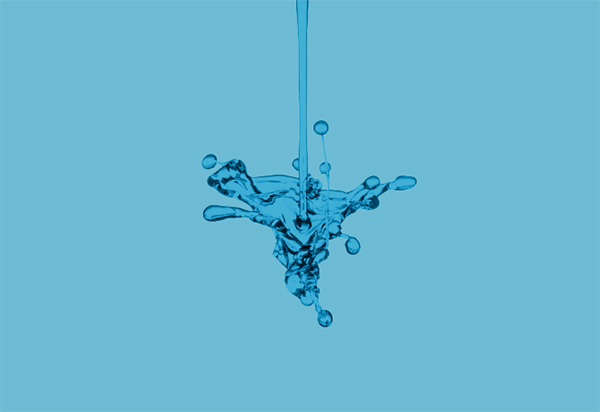Phycocyanin : what is it ?

Phycocyanin, like astaxanthin is a powerful antioxidant naturally present in the cyanobacteria spirulina It is the blue pigment that gives it its color (the “cyan” of cyanobacteria).
– More precisely, C-phycocyanin (C-PC) is a phycobiliprotein which constitutes the major pigment of Spirulina Arthrospira.
– It is highly valued by consumers of Spirulina, including people who practice sports regularly.
– The rate of phycocyanine is variable depending on the production of organic spirulina and will depend on the strain, sunshine, temperature and nutrients used for the development of spirulina.
Benefits of phycocyanin
Phycocyanin is a powerful antioxidant, so its benefits are related to the recognized powers of antioxidants. Antioxidants fight against cell aging and oxidative stress. The benefits of phycocyanin are the following:
– Antioxidant and anti-inflammatory properties
Phycocyanin is an antioxidant that binds to metals and scavenges certain health damaging radicals, making it an anti-inflammatory agent. [1][2][3][4]
– Benefits on the liver
Phycocyanin is believed to protect the liver from certain toxins by scavenging metabolites and free radicals. [1][5]
– Neuroprotective properties
Too much oxygen in the brain can generate reactive oxygen species (ROS). These ROS damage neurons and can lead to strokes. Phycocyanin eliminates certain types of reactive oxygen species (ROS), thereby reducing oxidative stress [6].
– It has anti-tumor properties
Cancer occurs when cells grow uncontrollably. It has been found that the molecule C-PC (C-phycocyanine) would prevent the growth of cancer cells. C-PC stops tumor formation before the “S” phase and slows down tumor proliferation. C-PC is a promising anti-cancer agent that has gained interest in pharmacological research in recent years. Scientists from Qingdao University propose a summary in a publication in the Journal of Cancer (2017) (Liangquian Jiang et al.) [7], [8]
– Tissue regeneration
In a pre-clinical study conducted by Cuban researchers, it appears that myelin sheath regeneration is stimulated by phycocyanin consumption. [9]
What is the best phycocyanin?
The best phycocyanin will depend, as always, on the brand name and producer. Make sure to choose a brand that indicates the origin of the production (France, Europe or other). The concentration will be an important factor on the quality of the phycocyanin you buy: in general, the higher the concentration, the more effective the product will be.
It is difficult to qualify the different phycocyanins between them, in general we talk about spirulina and their different phycocyanin levels! In this case, you have to pay attention to the phycocyanin rate measured on dry matter (important!). Many sellers of spirulina “cheat” and announce phycocyanin levels analyzed on fresh spirulina and not on the final product sold to the consumer. An artisanal spirulina dried slowly in the sun will have a greater chance to have a higher phycocyanin content than an industrially produced and dried spirulina.
How to use phycocyanin? What are its applications?
Pigments extracted from blue-green algae or cyanobacteria are used as :
- – Natural colorants in the food industry
- – Antioxidant agents in the cosmetic industry
- – For their health benefits in food supplements and in the pharmaceutical industry
- – Diagnostic agents in the medical sector
- – Fluorescent agents in biology, biotechnology and biomedical
In what form should I buy phycocyanin?
Phycocyanin can be found in powder or liquid form in ampoules. It is never pure but can be concentrated or “titrated” between 10 and 50%. Generally, the more concentrated the phycocyanin, the more expensive the product. Phycocyanin “alone” which is a spirulina extract is sold in different forms: in powder or in ampoules. The powder has the advantage to be very stable and to be better preserved, the ampoule is fragile and will be more difficult to preserve but it is more quickly assimilated.
Phycocyanin is more generally present in spirulina which is available in powder, tablets, capsules and flakes.
Where to buy phycocyanin?
You can find concentrated spirulina extract (phycocyanin) in specialized stores, online stores and some pharmacies. See also the article : Where to buy spirulina?
Danger of phycocyanin extracted from microalgae
Phycocyanin extracted from microalgae is highly effective and considered to be non-toxic.
How is phycocyanin extracted from spirulina?
The phycocyanin molecule is extracted quite easily. The extraction of phycocyanin is done from fresh spirulina biomass. It is a classical extraction, precipitation and filtration for its purification.
Dosage: when and how much?
Published studies as well as distributors recommend between 2 and 10 g of spirulina per day with a phycocyanin content varying between 10 and 20%.
